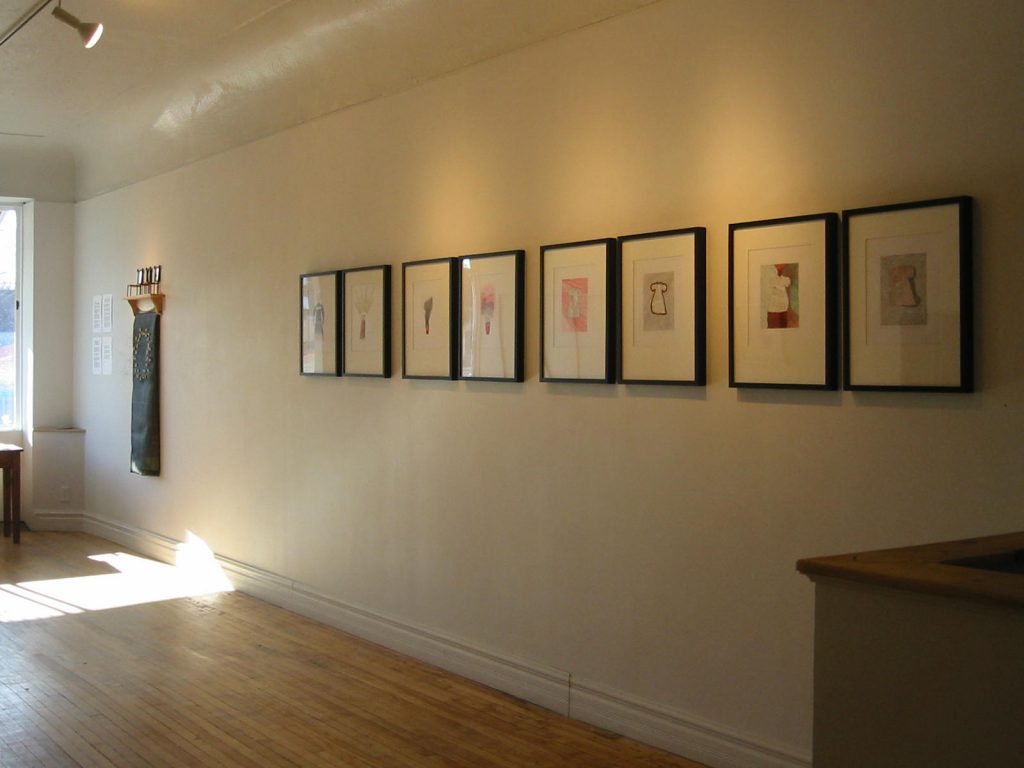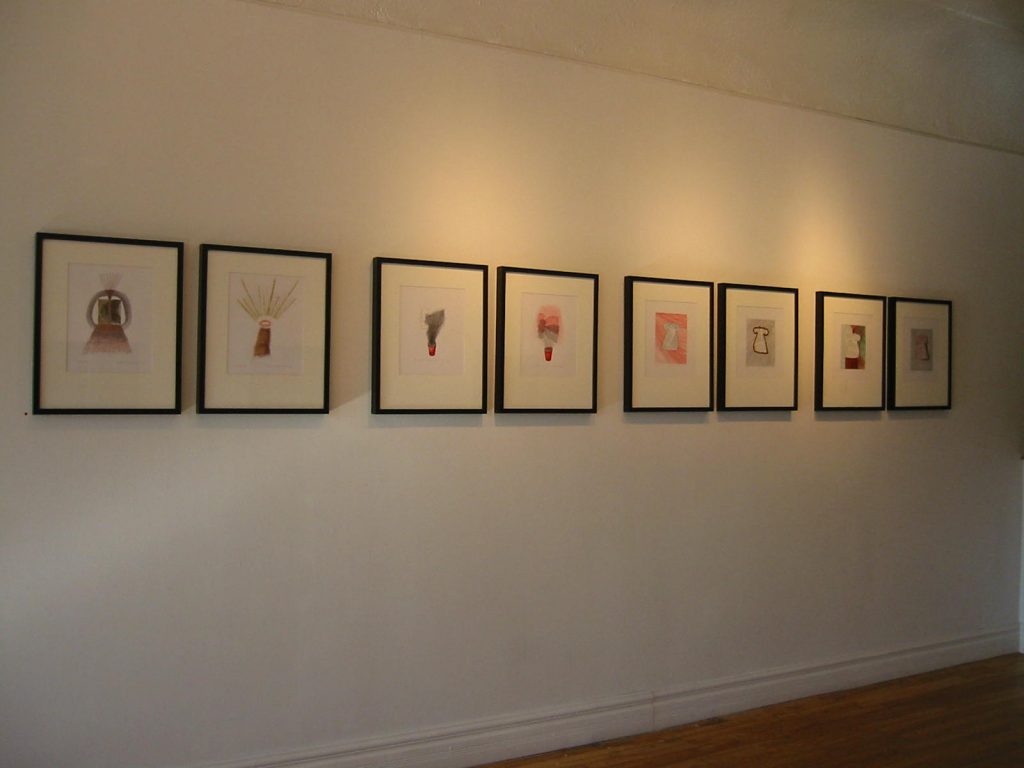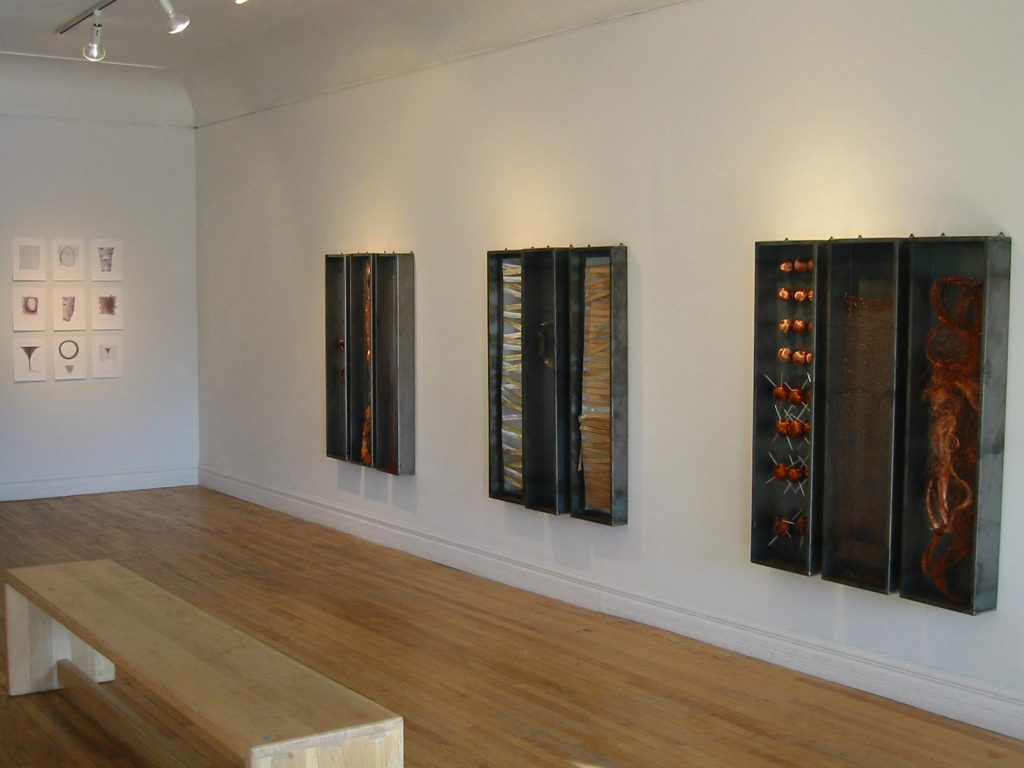Clarissa Schmidt Inglis uses religious iconography and symbolic elements of her Catholic childhood to engage a critical dialogue between the sacred and the profane. The artist questions Catholic dogma which promotes the feminine virtues of servitude, patience and self-sacrifice while stifling the expression of female sexuality. Industrial materials as well as drawings and excerpts from journals highlight the central conflicts developed by the artist.





